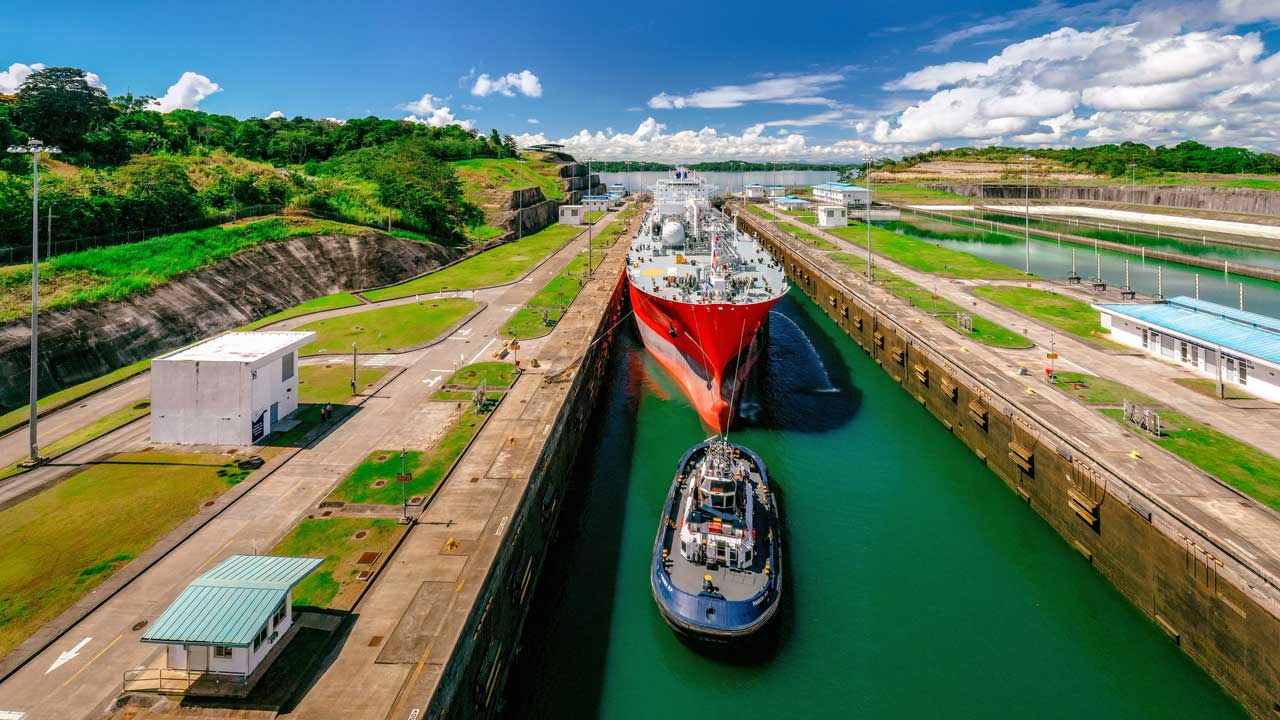
The Panama Canal, is grappling with an unprecedented challenge after drought conditions force a squeeze on its operations. Shippers worldwide now find themselves at a crossroads, confronted with prolonged waiting times, exorbitant fees, or the unconventional choice of circumnavigating entire continents to avoid the canal bottleneck.
Gatun Lake, a pivotal component of the canal system, which has seen minimal rainfall due to the El Niño-induced drought. The resulting water scarcity led the Panama Canal Authority to curtail daily ship transits from the usual 36-38 down to an anticipated 18 in February, marking a significant setback for global supply chains.
British American Shipping, highlights the repercussions, stating, “We face less capacity, more trips, higher costs and a less efficient supply chain. Everyone’s going to have to get creative and decide what they’re going to do.”
To exacerbate matters, the upcoming dry season, typical for Panama from December to April or May, promises to worsen the bottleneck. Shippers, especially those moving fuels from the U.S. Gulf Coast to Asia, are resorting to paying staggering amounts, up to $4 million, in auctions for slots that open when a reserved ship cancels.
The ramifications extend beyond the canal, with some vessels opting for detours around the southern tips of Africa and South America or through the Suez Canal. These alternative routes add substantial costs and time, with potential perilous encounters.
There are those who say “I sleep better at night knowing that I am going around the cape or Suez and not waiting in line, especially when it starts to be really desperate and you pay $4 million.”
Shipping companies are grappling with passing these added expenses to customers. Hapag-Lloyd, Mediterranean Shipping, and Maersk have introduced Panama-related surcharges. While the immediate impact on commodity prices remains restrained due to sluggish global demand, economists anticipate a trickle-down effect that will eventually impact consumers.
The crisis is hitting sectors beyond fuel shipping, affecting oil and gas vessels, container ships, and grain carriers. U.S. grain exporters, facing a 26% decline in exports to Asia compared to last year, may see competitors like Brazil, Ukraine, and Russia stepping in to fill the void.
Enrico Paglia of Banchero Costa notes the shift in grain flows, stating, “U.S. grain exporters will be hit hardest by the disruption to trade flows.”
The situation also poses challenges for perishable goods, as the extended transit times impact the freshness of products like fruits from Chile and Peru. There are warning of potential difficulties in reaching markets during the upcoming peak season.

Looking ahead, Nikolay Pargov, Chief Revenue Officer for Transporeon, said that container ship operators are proactively booking alternative routes for 2024. However, rerouting container ships with established routes poses a significant challenge, requiring shippers to adapt to longer transit times and navigate the financial implications.
As the Panama Canal crisis unfolds, the global shipping industry faces a complex dilemma, navigating between rising costs, extended transit times, and the imperative to find creative solutions to keep supply chains afloat.

